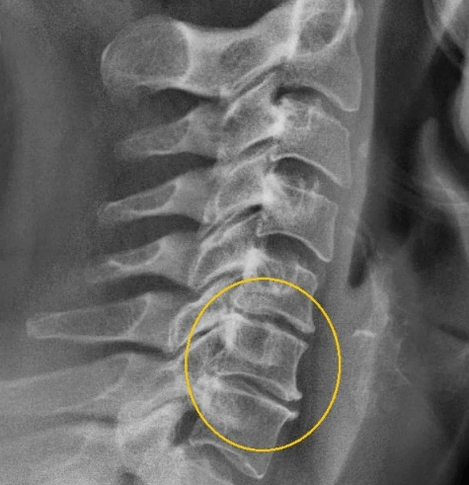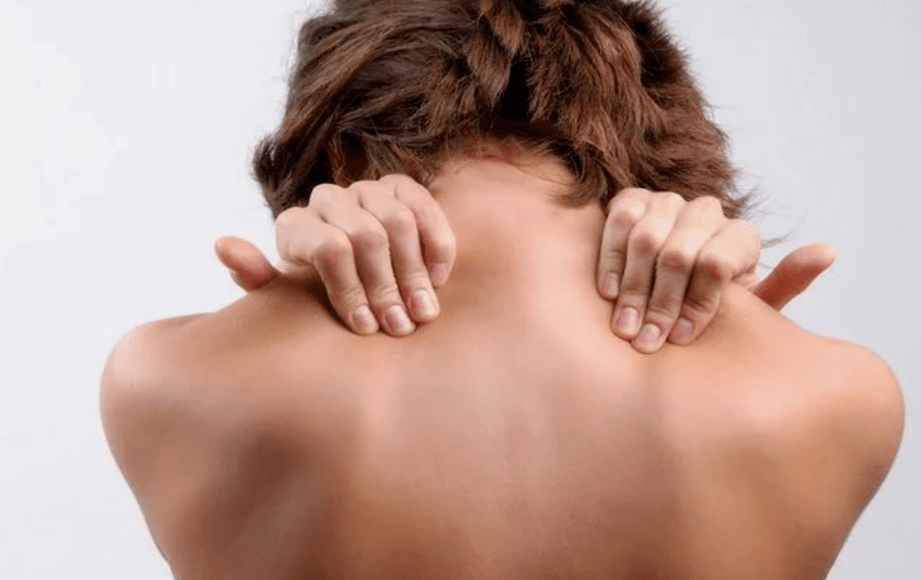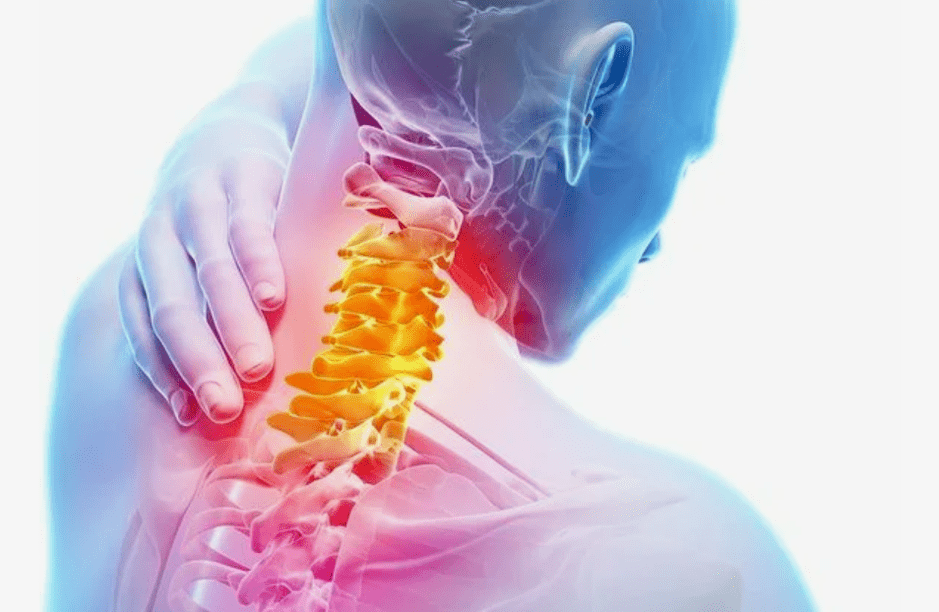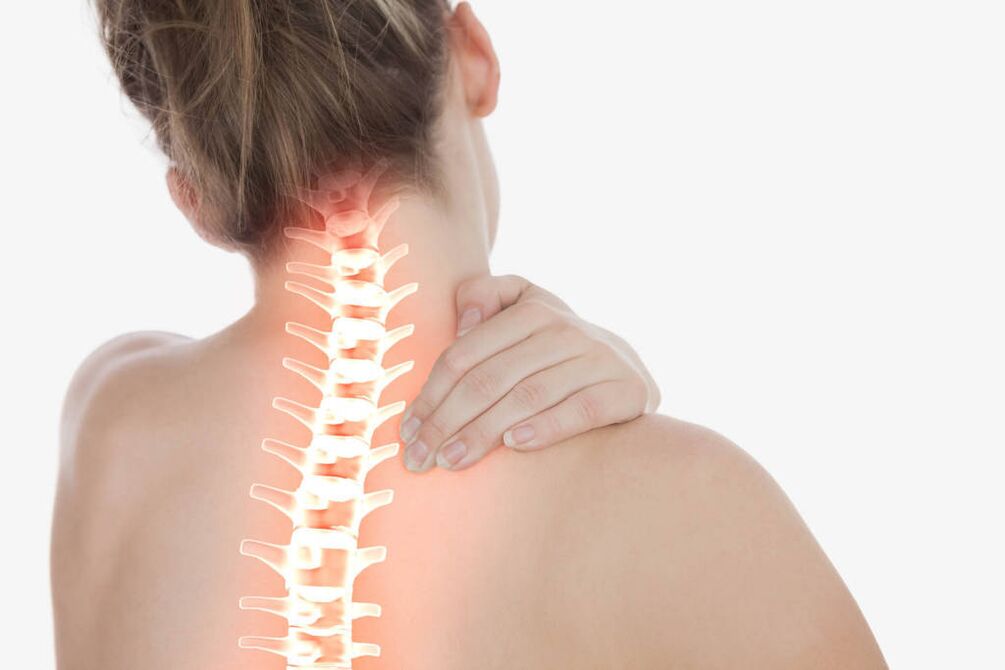Osteochondrosis is a common pathology of the spine, characterized by dystrophic changes in the structure of the vertebral cartilaginus disc and their bone base. For one degree or another, osteochondrosis shows itself in most people after 30 years. Symptoms of cervical osteochondrosis are diverse, which often complicates the diagnosis and subsequent treatment.

General symptoms and signs of cervical osteochondrosis
This process affects any spine or some at once. Lumbar and cervical vertebrae are most affected by the pathology, as they are most vulnerable to the burden of the anatomy of the human skeleton. The result of spinal osteochondrosis in the cervical region causes the most difficulty and complications, as its neck is a rich area of neuromus highways, most of which feed the brain directly.
For this reason, clinical symptoms with cervical osteochondrosis are widely associated with brain area ischemia. In addition, the nerve root, which provides the sensitivity and activity of the motor and shoulder rope, when squeezing with the destroyed vertebrate can provide a variety of symptoms.
Signs -Neck osteochondrosis depends on the body's system influenced by pathology:
- Disrupted blood circulation due to compression of the vertebral artery determines most of the symptoms and signs of the brain.
- Root compression that leaves the vertebrate gives a picture of the peripheral nerve wound.
- Pining the spinal cord is associated with severe neurological pathology found in advanced cases.
Below, consider the general clinic of the cervical spinal osteochondrosis.
Pain in the back of the head, neck and collar
These are the most common symptoms. The localization of pain can be expanded, affecting the shoulders, clavics, chest, passing through intense head migraines. The nature of pain depends on the localization of the lesion and the severity of the pathology. Initially, the pain can be temporarily temporary, gradually becoming chronic, painful. At times of severity, pain becomes shooting, with increased neck muscle tone and limited head movements.
Often, pain with cervical osteochondrosis can be localized to the back of the sternum, where many patients take these symptoms for angina pectoris. Differentiation can be done by taking nitroglycerin pills - pain from osteochondrosis, they are not removed.
Noise, ringing, sensation of congestion in the ear
These symptoms often participate in hearing loss. This phenomenon is associated with a decrease in blood flow from the vertebral artery to vestibular. Complex symptoms -these symptoms are called cochlear syndrome, or snails, and are far from always possible to determine their contact with osteochondrosis in the cervical region. Special features for differentiation are noise, congestion and ringing in the ear when changing positions, after a long stay in one position.
Dizzy
Dizziness is also caused by a violation of blood flow to the inner ear organs, which ensures the body's balance. Nystagm often joins dizziness - fluctuations in the eyes to the eyes.
Shortage
This sensation arises due to irritation of the diaphragm nerves. It is a component of the cervical nerve beam and is involved in the regulation of respiratory, depth and frequency. The patient complains about the inability to breathe in the full chest. In some cases, symptoms exacerbate shortness of breath and drowning. For the same reason, breathing stops at night and snoring. Oxygen weakness due to respiratory problems eventually leads to increased fatigue, decreased concentration and memory problems.

Nausea
It is accompanied by air. It is also caused by problems with blood circulation in some areas of the brain and ears. Nausea is sometimes observed with vomiting, caused by the movement of the head and body. The result of frequent nausea and vomiting is a decrease in appetite, weight loss, alimentary failure.
Problems with vision
"Flies" in the eyes, decreased visual acuity, fog in front of the eyes - these are all symptoms caused by the ischemia of the brain area responsible for vision. Patients with osteochondrosis complain of lack of vision, as the lack of blood supply from the vertebral vessels is compensated by blood flow from the carbon artery system. Glasses and therapeutic gymnastics for the eye muscles do not solve the problem, usually the vision improves after the treatment of osteochondrosis.
What are the most important symptoms of osteochondrosis being told briefly in this video:
Blood pressure board
The unstable level of pressure is due to the affected blood flow in the oval brain responsible for the vascular-motor central function.
Suddenly -the fainting, or a syncopal state
It occurs with brain artery cramps as it stops short -term blood flow along the vertebral artery. From the patient's loss of consciousness, you can quickly be removed by placing it so that the feet are slightly higher than the head - blood flow to the brain allows one to lead to life. After fainting attacks, problems that can be reversed with speech and movement, due to short blood flow stops, can be observed for some time.
Symptoms of green
Often it may be the only sign that shows cervical osteochondrosis. They are expressed as sweat, dryness and lumps in the throat, difficulty with swallowing. Symptoms are associated with compression of the nerve plexus responsible for the conservation of faring. It is necessary to distinguish such manifestations from the same clinic for inflammation or neoplasms.
Increases body temperature
The increase in body temperature for cervical osteochondrosis is not the most typical, rare and localized symptoms: in the cervical and collar area, with a slight redness of the skin.
The osteochondrosis clinic in the cervical spine can, first, from various levels of severity, depends on the level of pathological development, as well as during their severity, and second, to form specific syndrome.

Symptoms depend on the level of cervical osteochondrosis
Level i
The beginning of the degenerative process in the cartilage of the vertebral disc. Symptoms are weak, sometimes they cannot be observed at all. The first signs of cervical spinal osteochondrosis:
- discomfort in the neck, arms, shoulders, sometimes turning into pain;
- headache;
- simple restrictions on neck motor activity;
- Quickly pass through the visual deterioration;
- Reduces the skin sensitivity of the collar area.
Important: These symptoms become clearer when tilted the head.
As a rule, in the first stage of osteochondrosis of the cervical area, the patient does not go to the doctor, believing that all symptoms are associated with fatigue, stress, age, lack of sleep.
Stage II
At this stage, the highlight of the vertebrate begins, the intervertebral cracks are narrow, the collagen disc fibrous ring fiber is destroyed. There are symptoms that are painful from the point of the point of compression of the nerve stem, increasing during neck movement and head turn. Here you can already suspect cervical osteochondrosis, the second stage symptoms are as follows:
- Called pain in the neck, sometimes with problems;
- Shoulder and hand skin loss is almost entirely sensitive;
- Headache is frequent, do not pass for a long time;
- Visual deterioration with "flies" in the eyes;
- ring and noise in the ear;
- upper leg muscle weakness;
- The clarity of the tendon reflex reduced;
- shooting pain with dedication under the shoulder blade;
- Feelings of bumps in the throat, problems with swallowing;
- Sleep disorders, usually insomnia.
Long holding the head in one position leads to severe pain. At the developmental stage of the disease, the patient has come to the doctor for help.
Level III
The fibrous ring in the disc is destroyed, the hernia is formed. In the third stage, there are spinal deformation, displacement and vertebral dislocation due to their weak setting. Symptoms are as follows:
- pain, acute pain in the neck, collar zone, heart area;
- The sensitivity of the scalp in the back of the head, in the shoulder region, in the hands, until the absence of a complete;
- cervical spinal hernia;
- paresis and upper foot paralysis;
- Practical tendular reflexes are not observed.
This is a severe stage of the disease where the patient can no longer support his own head. Spinal cord ischemia and compression of the spinal artery lead to complete inability to move and reduce the power of the muscles in other parts of the body, as well as spinal disorders.

How to treat cervical osteochondrosis
The spinal cord described is a very serious pathology, which, by neglect, leading to defects, and the consequences of deep disruption of the cerebral circulation - and death. For this reason, with a self -medication in the event of such symptoms, you cannot do it. Osteochondrosis is treated in hospitals and at home exclusively as a doctor's prescription. In the early stages, cervical osteochondrosis treatment was conservative, including drug prescription: unstable anti -inflammation, anesthetic, hormone drugs, vitamin complexes, joint drugs -all of these relieves inflammation, pain, increased trophic soft tissue and vertils.
During the acute period, medications are prescribed in the form of injections, when the pain decreases, the patient goes to the tablet. Physiotherapy, massage, training training, usually prescribed at the remission level, participating in drug courses. In difficult cases, osteochondrosis is treated with surgery.






























